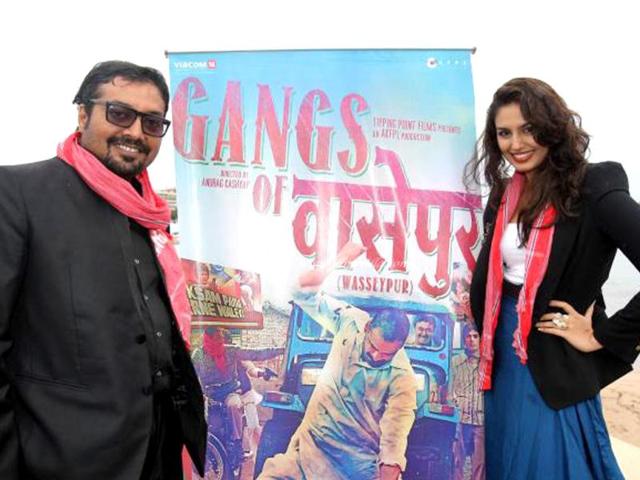
The film’s hero, Sardar Khan, played by Manoj Bajpayee, is an heir of the mining labourer’s rage, and his revenge is the revenge of the exploited against a greedy political establishment. In the 1950s, we are told how little things had changed for the labourer from colonial times to when “Birla-Tata" became the masters. Stellar: Manoj Bajpayee (left) as Sardar Khan and Tigmanshu Dhulia as the local politician in a still from the film

The central conflict is between people separated socially, but joined in crime and bribery (in one of the film’s telling details, a Muslim butcher sits in the drawing room of a Hindu politician, joining hands against the film’s hero, while in the background the Hindu housewife discreetly lays the table for dinner with caution, possibly separating the utensils for the Muslim).
#GANGS OF WASSEYPUR MUSIC DIRECTOR FREE#
In the way it is narrated and acted, Kashyap intends to explain what coal mining has done to generations of the labour class-how organized crime is often an obscene extension of free enterprise and government policy. The drama of these characters colliding is the throbbing heart of the film, and indeed the only reason to watch it. A seemingly harmless pothead cold-kills with precision.

A ganglord is devious, comical and idiotic. In characterization, and in the immediate human story of revenge and bloodbath, the first part of Anurag Kashyap’s film is thickly textured. In Gangs of Wasseypur, it is a triumphant possibility. And that seamless blend is what makes it so beautiful.In a rarefied space where sensuality and terror coexist, and often tenderness too, melodrama is not easily perceptible or imaginable. It runs parallel with the story and swings between the decades that the films portray. It conveys the mood of the situation perfectly. Sometimes, we forget about just how the great the music from Wasseypur is, given the multitude of things that stand out when you're watching these films but that's okay. It's a perfect blend of folk music from rural Bihar and UP and the studios of Mumbai. But this soundtrack is just not something one comes across every day. Source: News18 The word "unconventional" is widely overused in our line of work, especially when we're describing anything Anurag Kashyap has touched with a ten-feet pole. The only instrument you actually hear is the harmonica, which keeps the focus on the pain in the voice of the singer!Īnd if you're looking for romantic songs here, look no further than Moora. Source: YouTube Then there's Humni Ke Chhodi Ke, which just breaks your heart into a million pieces. It's weirdly an Eye of The Tiger of our times. Both Amit Trivedi and Sneha Khanwalkar, who lend their voices to this song, make sure that you feel every bit of Sardar Khan's wrath and motivation. Keh Ke Lunga is another such song, that's just so powerful with its lyrics. O Womaniya just grows on you as you listen to local singers just celebrate the occasion. Thank you, Piyush Mishra, for that! Source: Alchetron It feels like a song out of time but never out of place.

It's raw and wacky and sometimes a bit out of tune, but that's intentional and what makes it such a catchy song. Source: Times of India Then you have Hunter, which is a very weird song, even by the standards of this film series. You have songs like Jiya Tu, which are catchy and modern but still maintain their ethnic feel. The songs truly stay true to the films and their ethos, the region it's based in and the characters in them. This is where the entire album, which consists of 15 songs BTW, truly stands out, courtesy of Sneha Khanwalkar’s music. Hence, you have the same two romantic songs, a sad song here and there, maybe a motivational song, and of course, an item number to be played at weddings and processions. More often than not, in Hindi films, especially films made in the last decade or so, music is considered something of a promotional strategy. It's not conventional by any standard, let alone Bollywood. Source: Daily Sun But if one thing particularly stands out about the films, it's the music. As someone who has watched the films way too many times, it comes as no surprise that the films are universally loved. Everyone who has watched the Gangs of Wasseypur movies has loved them.


 0 kommentar(er)
0 kommentar(er)
